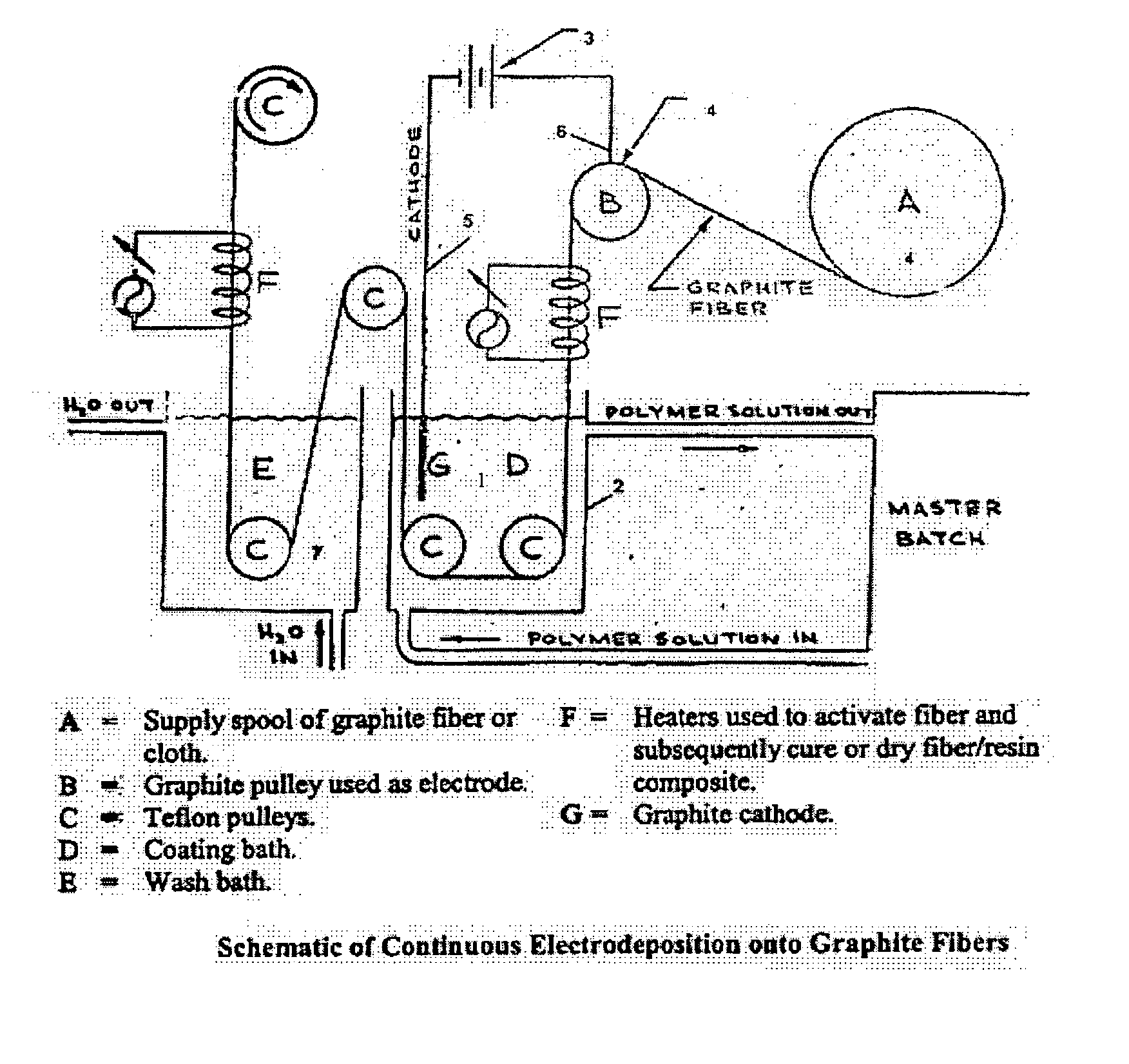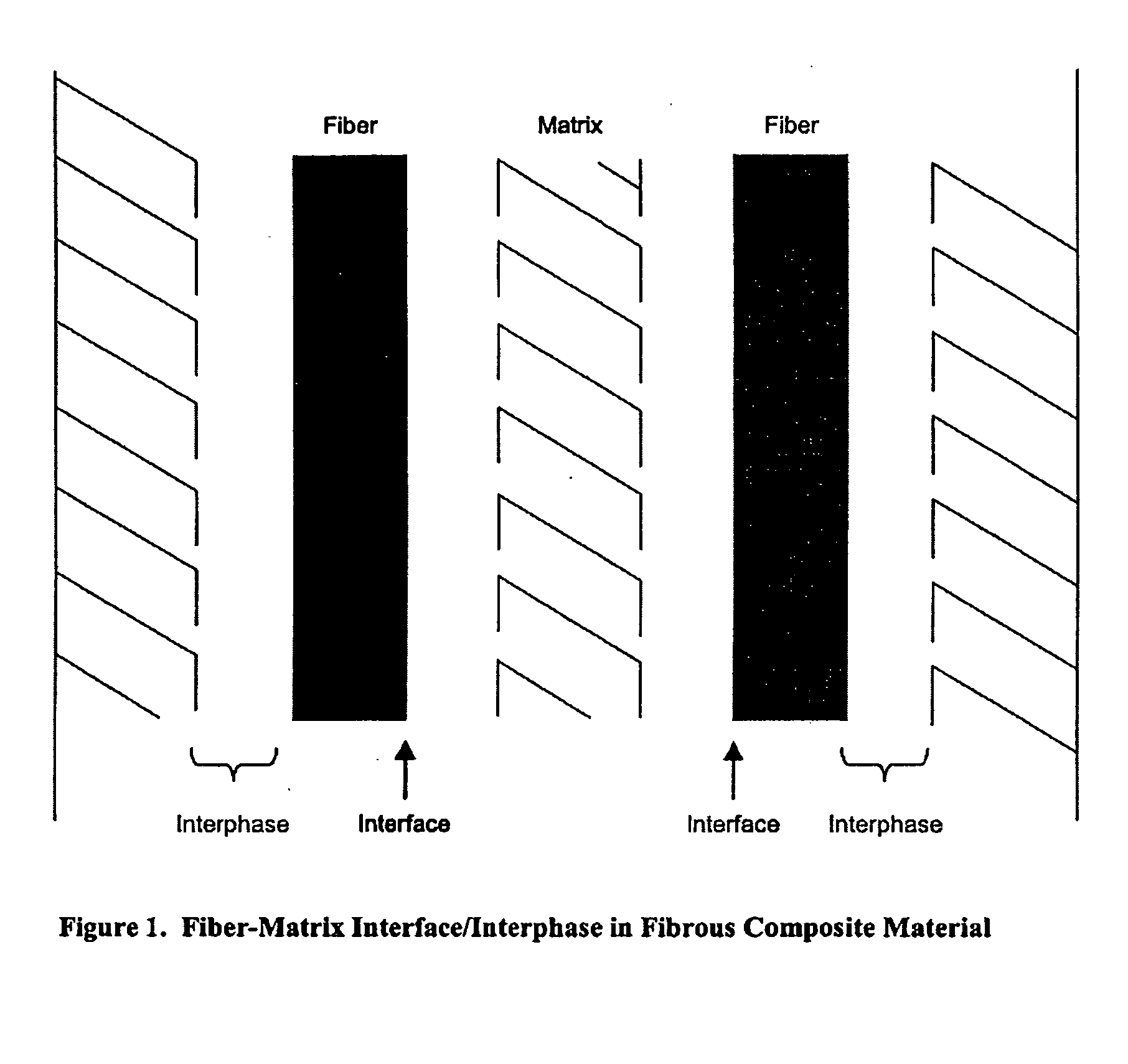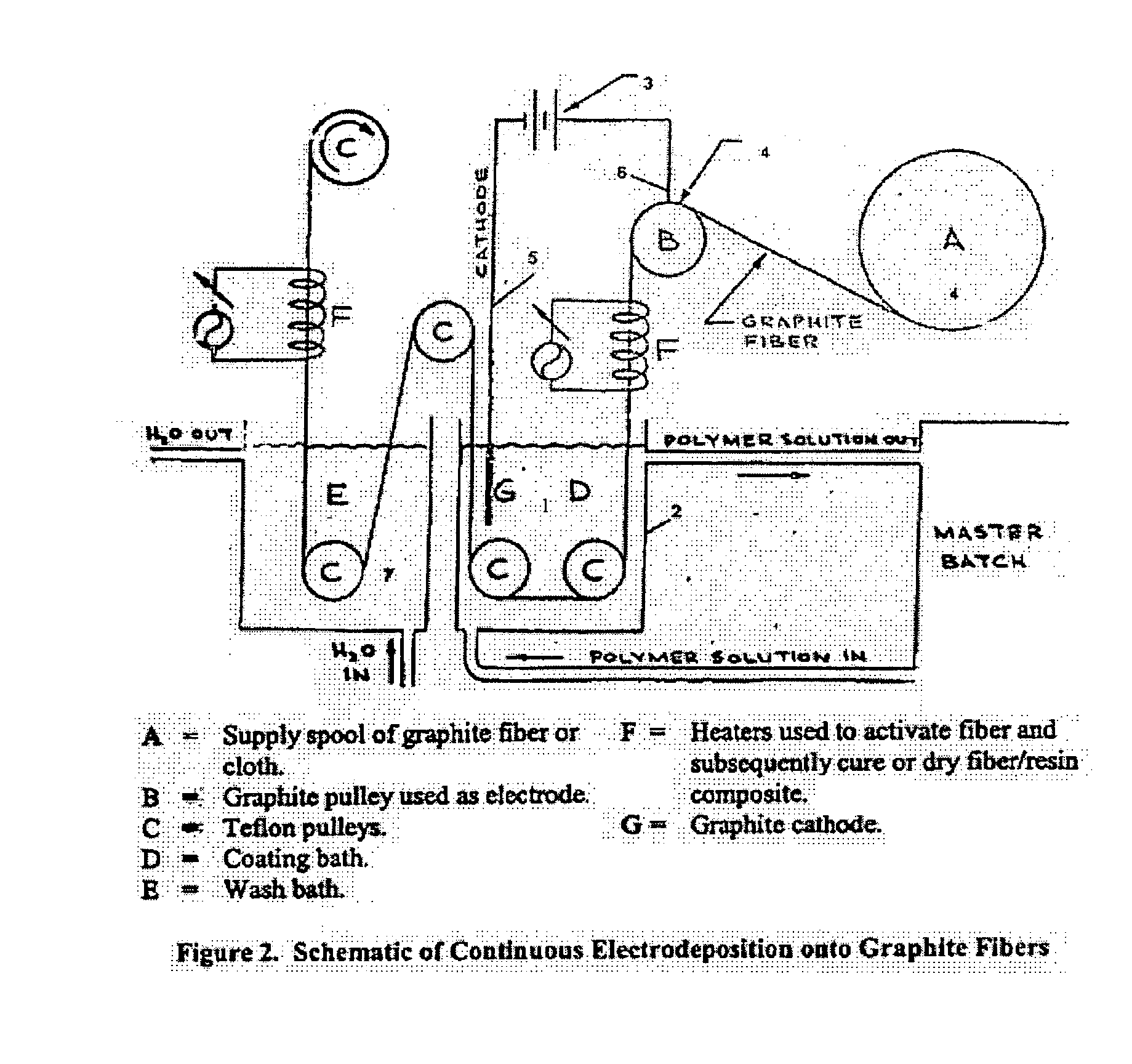Electrochemical deposition process for composite structures
a composite structure and electrochemical technology, applied in the field of electrochemical deposition, can solve the problems of many limitations in the formation of composite structures, the physical bond between the resin and the carbon fiber of the composite, and the chemical bond between the resin and the fiber material, i.e. at the interface between the fiber and the matrix resin, is typically a limiting factor in the strength of the composite material, and achieves good thermal protection and stronger covalent bonding in the composite material.
- Summary
- Abstract
- Description
- Claims
- Application Information
AI Technical Summary
Benefits of technology
Problems solved by technology
Method used
Image
Examples
example 1
Electrodeposition of Carboxymethylcellulose
[0050] A 15 percent solution of carboxymethylcellulose (CMC) is prepared by dissolving 15 grams of CMC (0.07 moles) in 85 mls of deionized water in a stainless steel container. To this is added 0.07 moles of 28 percent ammonium hydroxide (8.7 grams). With the carbon fiber onto which the CMC will be electrodeposited as the anode in an electrolytic cell and the stainless steel container as the cathode, the electrolysis is begun by adjusting the d.c. voltage and measuring the drop in current (amperes) with time. When the amperes are close to zero or some other predefined low value, the electrodeposition is stopped. By way of example, the following current / voltage / time data typifies the electrodeposition process. Table 1 shows the drop in current for a 20 volt (d.c.) electrodeposition. Voltages used have been from five (5) volts to 150 volts; and times have been from 15 seconds to 20 minutes, depending upon how much organic coating is wanted. ...
example 2
Electrodeposition of Polystyrene / Maleic Anhydride
[0051] Following the procedure of Example 1, 15 grams of polystyrene / maleic anhydride alternating copolymer which had been hydrolyzed to the diacid, viz., styrene / maleic acid (0.07 moles), was dissolved in 85 mls of water and treated with two molar equivalents of ammonium hydroxide (for the dibasic acid in the copolymer), i.e., 17.4 grams of a 28 percent ammonium hydroxide solution. The electrodeposition was performed as shown in Example 1 and washed with water. The resultant product was examined via SEM and FIG. 8 shows a 10× magnification, while FIG. 9 shows a 1000× magnification. After a caustic (NaOH) wash, the fibers looked as shown in FIG. 10 (a 10× magnification) and FIG. 11 for a 1000× magnification.
example 3
Electrodeposition of Shell DX-16
[0052] This example demonstrates the possibility of performing the electrodeposition in a mixture of organic solvent and aqueous solution. Using a compound known as Shell DX-16 (FIG. 12) (Shell Chemical Co., Emeryville, Calif.) which was dissolved in N-methylpyrrolidone (NMP) to a 50 percent concentration and then made as a 15 percent solution in deionized water (resulting in a mixture of water and NMP) and neutralizing this with 28 percent ammonium hydroxide, an electrodeposition was performed on Thornel 50 fiber at 20 volts. The current dropped from 952 amperes to 65 amperes in 3.5 minutes. Thus, indicating the deposition of a coating as the fiber became coated with an insulator.
PUM
| Property | Measurement | Unit |
|---|---|---|
| temperature | aaaaa | aaaaa |
| current | aaaaa | aaaaa |
| electrically conductive | aaaaa | aaaaa |
Abstract
Description
Claims
Application Information
 Login to View More
Login to View More - R&D
- Intellectual Property
- Life Sciences
- Materials
- Tech Scout
- Unparalleled Data Quality
- Higher Quality Content
- 60% Fewer Hallucinations
Browse by: Latest US Patents, China's latest patents, Technical Efficacy Thesaurus, Application Domain, Technology Topic, Popular Technical Reports.
© 2025 PatSnap. All rights reserved.Legal|Privacy policy|Modern Slavery Act Transparency Statement|Sitemap|About US| Contact US: help@patsnap.com



